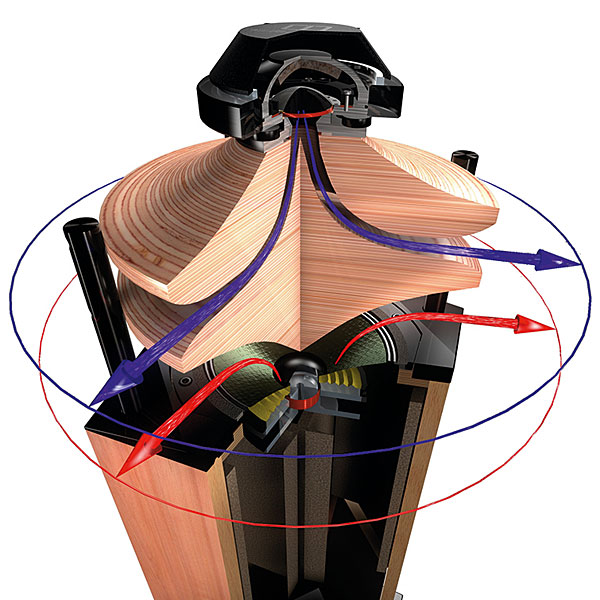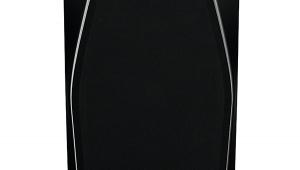Duevel Bella Luna Diamante Loudspeaker Saucer-Shaped Sound
Highly respected voices within the audiophile community, including the late Siegfried Linkwitz [HFN Mar '16], have long argued in favour of loudspeakers that exhibit continuity between their on- and off-axis responses, ensuring the spectral content of both the direct sound and early reflections have a similar spectral 'weighting'. The omnidirectional speaker is perhaps the purest example of this ideal, although engineering a box that radiates a full-bandwidth hemisphere of equal-intensity sound is not especially practical. B&O's recent BeoLab 90 [HFN Dec '16] gets close in 'omni mode' with its DSP-corrected, actively-driven array of seven tweeters, seven midrange and four woofers, albeit at some cost.

A purely passive design like the Bella Luna Diamante must attempt a compromise by working with, rather than forlornly against, what is achievable. True omnidirection radiation is possible at low bass frequencies where the very long wavelengths (100Hz = 3.43m) diffract around the tall, narrow cabinet, but at higher mid and treble frequencies the wavelengths get progressively smaller (1kHz = 0.34m; 10kHz = 3.43cm) and the output more focused – so-called 'beaming' – along the driver's forward axis.
Modern tweeters typically incorporate short flares, phase plugs or perforated plates to widen and unify directivity at these higher frequencies, but Duevel goes a stage further by using a compression-loaded 44mm titanium unit that delivers a full 360° output via the inside surfaces of its two 'flying saucer' reflectors [purple arrow, inset illustration]. The underside of the lower reflector distributes the output of the upward-firing 220mm doped-pulp bass/mid driver [red arrow]. In both cases Duevel is trading excellent horizontal dispersion for a uniformity that is compromised by the off-axis performance of the drivers – hence the very erratic forward response measured in our lab tests. PM
























































